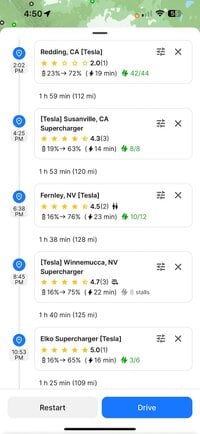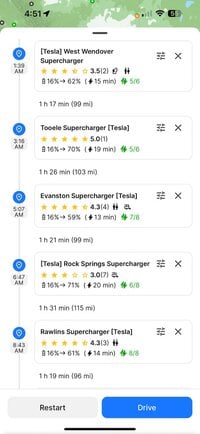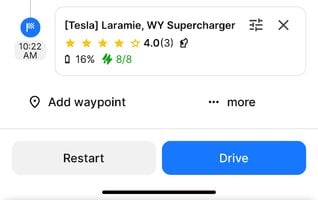Not sure if this is true for the Long Range, but I've found that both the app and car usually overestimate how long my LFP RWD takes to charge, sometimes by a lot.
Just yesterday I was on a road trip and stopped to eat, so I raised the charge limit to 100% because my kids are slow eaters and I figured we'd be there for a while. I was at 18% and the car said 55 minutes to charge limit, but in reality it only took 43 minutes to charge from 18-100%.
Another example that I can remember from this trip... the Tesla app said when I arrived at the Louisville (Boerste Way) Supercharger with 16%, it would take 29 minutes of charging to reach the next planned Supercharger in Indianapolis (Southport Rd) with 11%. In reality, I reached the Louisville charger with 14% and charged to 70% in 18 minutes to reach the Indianapolis charger with 12%. I mean, 29 minutes predicted vs 18 minutes actual is a massive difference.
Do the predictions just suck or are they lying about how long the LFP batteries take to charge to push people towards the Long Range?
Another anecdote... practically every single time I stop at a Supercharger while road tripping my LFP RWD, I arrive, charge, and leave before any of the Long Range 3s, Long Range Ys, Ss, and Xs that were already charging when I got there leave. Maybe the average Tesla driver is just very unoptimized and charges to 90-100% every time, but I find it odd that I leave before everyone else so often. According to my stats, my average Supercharging session is 17.5 minutes, which would be like charging from 10-65%, which is pretty typical for me, unless my family is eating a meal.
Here are the charge times I'm typically seeing on my RWD:
10-50%: ~11 minutes
10-60%: ~15 minutes
10-70%: ~20 minutes
10-80%: ~26 minutes
10-90%: ~35 minutes
10-100%: ~50 minutes







